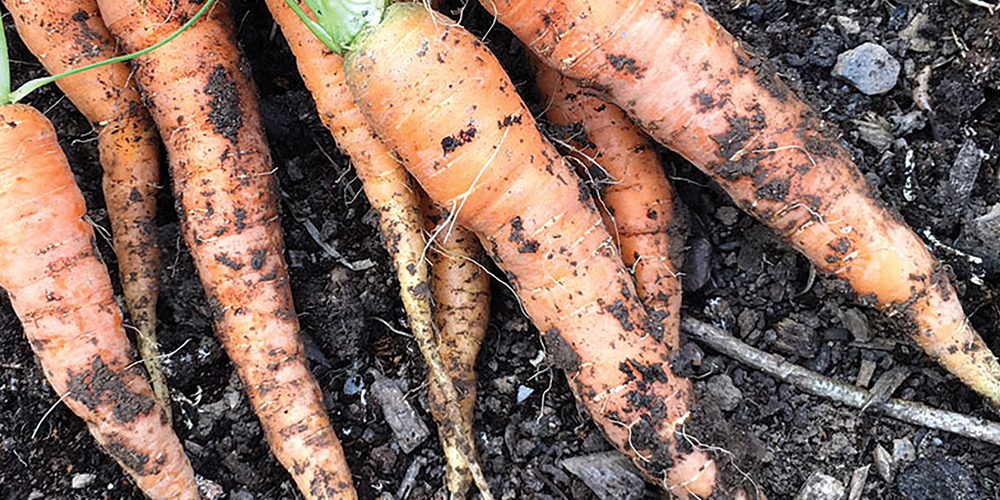Well, growing vegetables always comes down to soil quality really, but for growing root veggies, this is extra true. Here’s how to give your root vegetables the best chance to grow well.
Clay Soil? Lumpy Soil? Stony Soil?
If any of the above describes your soil, then here are some ways to make the soil a little more welcoming to your root veggies:
- Dig over the soil really well, adding plenty of organic matter (well rotted manure or compost) to help the soil texture, and removing any heavy stones. Rake it well to pull up the worst offenders!
- Dig a trench, about 20cm deep, and fill with multipurpose compost (you could mix this with topsoil to make it go further) – you can plant the root veggies in this instead.
- Go no-dig – mulch the beds with a generous 15cm layer of compost and plant directly into the compost. Your root veggies will love it, and if you keep topping up these no-dig beds, the soil texture will begin to improve over time. See below posts on no-dig for more information
- Alternatively, you can grow in pots/containers or grow bags if you turn them up on their side so that you get more depth.
Sandy Soil? Loamy Soil?
You should be able to simply plant the root veggies and mulch well and enjoy the results.
Isn’t too much compost bad for roots?
We’re not quite sure where this information comes from in the gardening world, or what science it is based on, but we have never had a problem growing carrots or parsnips directly in pots of compost. You may find the roots fork, but this is very common with transplanted carrot/parsnip plug plants, and that’s why we supply them in biodegradable fibre pots so that they experience as little manhandling as possible. We would recommend thinning out the plugs, by pinching off some of the seedlings, so that you grow only one root per plug, if you want your parsnips/carrots to look ‘right’!
So, what causes cracking/splitting/forking/misshaped veg?
The most common reasons for these to occur include the following:
- Big stones in the soil causing the root to fork out
- Soil going from drought conditions to overwatering can cause splitting/cracking
- Seedlings/plugs being overhandled when transplanting can cause misshapen roots – thinning out can help this
- Overcrowding can cause roots to tangle in amongst each other – thinning out and following plant spacings can help this.

